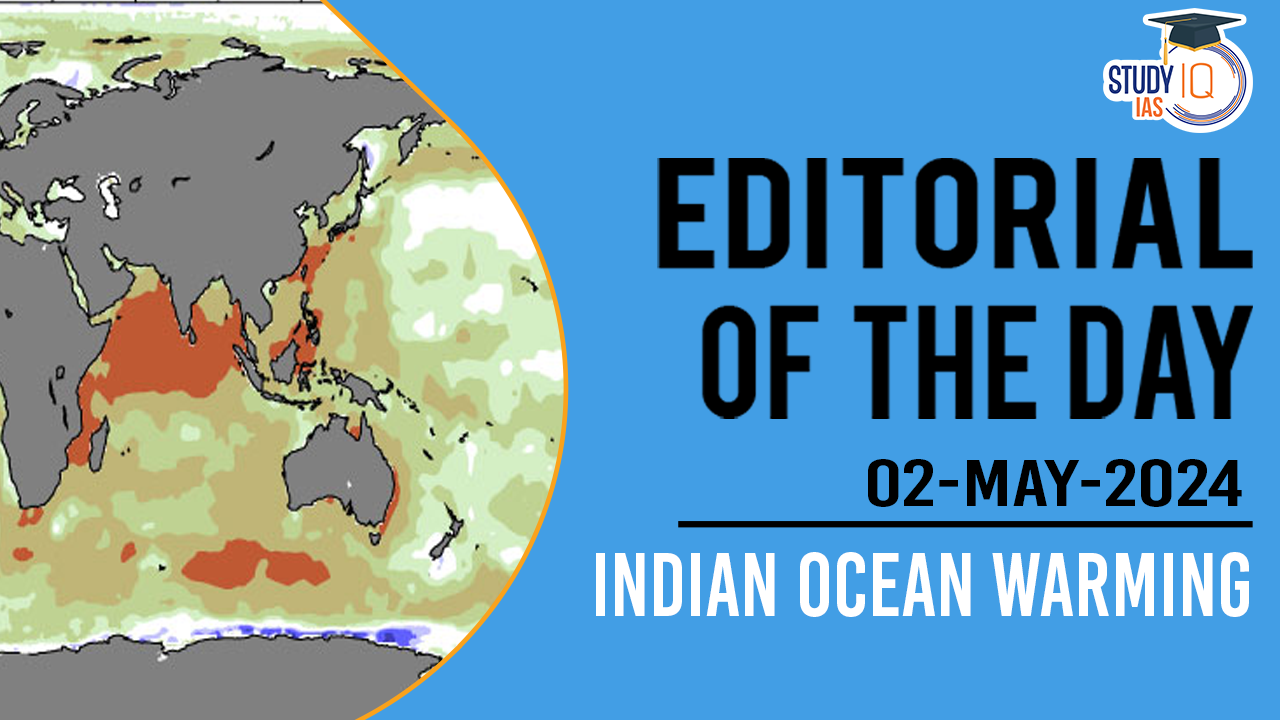Table of Contents
Context
- A study conducted by the Indian Institute of Tropical Meteorology, Pune, along with other global institutions, has projected significant warming in the Indian Ocean based on current global carbon emission trends.
- The Indian Ocean has already warmed by 1.2°C and is expected to heat up further by 1.7°C to 3.8°C from 2020 to 2100.
What are Impacts of Indian Ocean Warming?
Impact on Marine Life and Fisheries
- The warming of the ocean will accelerate coral bleaching.
- The heat content of the ocean, measured from the surface to 2,000 metres below (Deep Ocean), is rising at the rate of 4.5 zetta-joules per decade and is predicted to rise to 16-22 zetta-joules per decade in the future (1 zetta-joule equals a billion-trillion joules (10^21 joules)).
- This warming will harm the fisheries sector.
Impact on Coastal Regions
- The frequency of severe cyclones is expected to rise due to warming of the Indian Ocean.
- The monsoon will become more erratic with long dry spells followed by intense rain and flooding.
Cause of Warming and Mitigation Strategies
- The warming is linked to global warming caused by anthropogenic sources such as fossil fuel burning.
- Current global commitments to reduce greenhouse gas emissions are unlikely to significantly impact the Indian Ocean’s warming trend.
- To mitigate the impact, India needs to collaborate with countries bordering the Indian Ocean to improve data collection and invest in projections to guide development and protection efforts.
|
Facts About the Indian Ocean |

Monsoonal Influence and Atmospheric Pressure Variations:
Status of the Fisheries Sector in India
|


 Transforming a Waste-Ridden Urban India:...
Transforming a Waste-Ridden Urban India:...
 Carbon Border Adjustment Tax (CBAM): Mea...
Carbon Border Adjustment Tax (CBAM): Mea...
 RBI Financial Stability Report 2025: Eco...
RBI Financial Stability Report 2025: Eco...

























